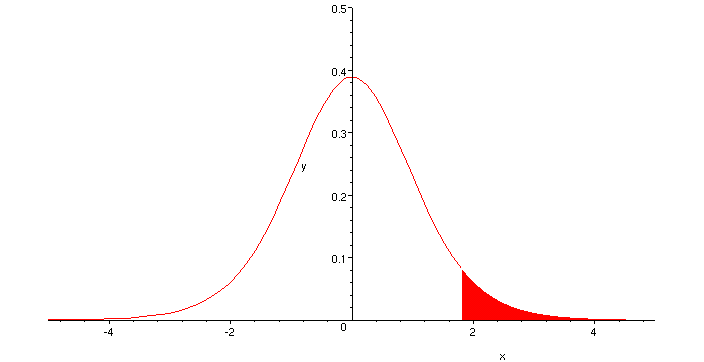You need to double the value of
For example, if
![]() and the sample size (degrees of freedom) is
and the sample size (degrees of freedom) is ![]() , the formula is
, the formula is
When this command executes, the result is
The graph below represents this result. The shaded area goes from ![]() to
to ![]() , and has total area equal to
, and has total area equal to
![]() , or
, or ![]() .
.
This threshold value would be used to construct a Right-tailed test or confidence region.

(Note: this is the correct syntax for Excel. It is slightly different for other spreadsheets. Consult the help menu of the spreadsheet you are using to find the correct syntax for your spreadsheet program).